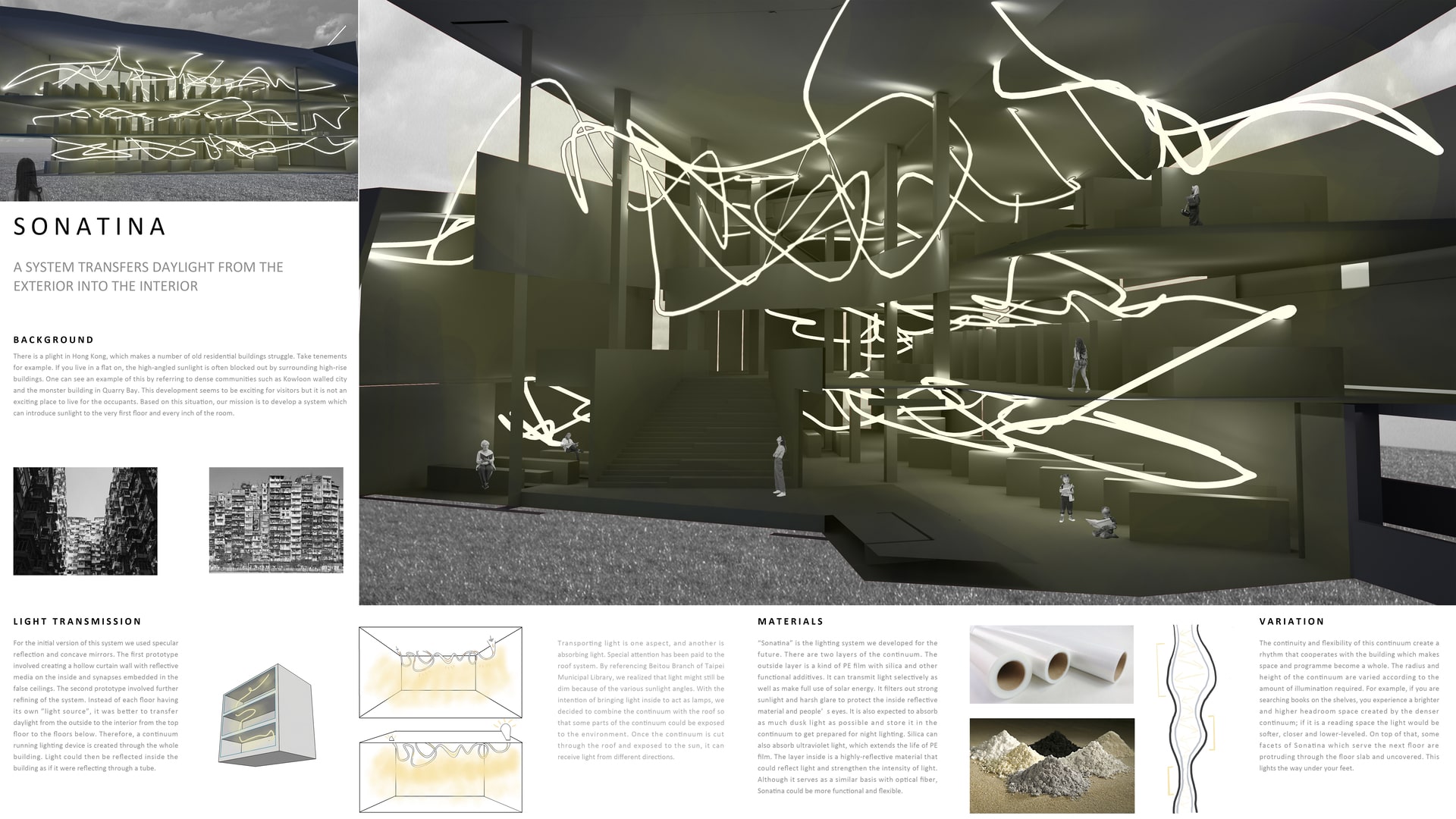Project Description
Sonatina - a system transfers daylight from the exterior into the interior There is a plight in Hong Kong, which makes a number of old residential buildings struggle. Take tenements for example. If you live in a flat on, the high-angled sunlight is often blocked out by surrounding high-rise buildings. One can see an example of this by referring to dense communities such as Kowloon walled city and the monster building in Quarry Bay. This development seems to be exciting for visitors but it is not an exciting place to live for the occupants. Based on this situation, our mission is to develop a system which can introduce sunlight to the very first floor and every inch of the room. For the initial version of this system we used specular reflection and concave mirrors. The first prototype involved creating a hollow curtain wall with reflective media on the inside and synapses embedded in the false ceilings. The second prototype involved further refining of the system. Instead of each floor having its own ”light source”, it was better to transfer daylight from the outside to the interior from the top floor to the floors below. Therefore, a continuum running lighting device is created through the whole building. Light could then be reflected inside the building as if it were reflecting through a tube. Transporting light is one aspect, and another is absorbing light. Special attention has been paid to the roof system. By referencing Beitou Branch of Taipei Municipal Library, we realized that light might still be dim because of the various sunlight angles. With the intention of bringing light inside to act as lamps, we decided to combine the continuum with the roof so that some parts of the continuum could be exposed to the environment. Once the continuum is cut through the roof and exposed to the sun, it can receive light from different directions. “Sonatina” is the lighting system we developed for the future. There are two layers of the continuum. The outside layer is a kind of PE film with silica and other functional additives. It can transmit light selectively as well as make full use of solar energy. It filters out strong sunlight and harsh glare to protect the inside reflective material and people’s eyes. It is also expected to absorb as much dusk light as possible and store it in the continuum to get prepared for night lighting. Silica can also absorb ultraviolet light, which extends the life of PE film. The layer inside is a highly-reflective material that could reflect light and strengthen the intensity of light. Although it serves as a similar basis with optical fiber, Sonatina could be more functional and flexible. The continuity and flexibility of this continuum create a rhythm that cooperates with the building which makes space and programme become a whole. The radius and height of the continuum are varied according to the amount of illumination required. For example, if you are searching books on the shelves, you experience a brighter and higher headroom space created by the denser continuum; if it is a reading space the light would be softer, closer and lower-leveled. On top of that, some facets of Sonatina which serve the next floor are protruding through the floor slab and uncovered. This lights the way under your feet.
